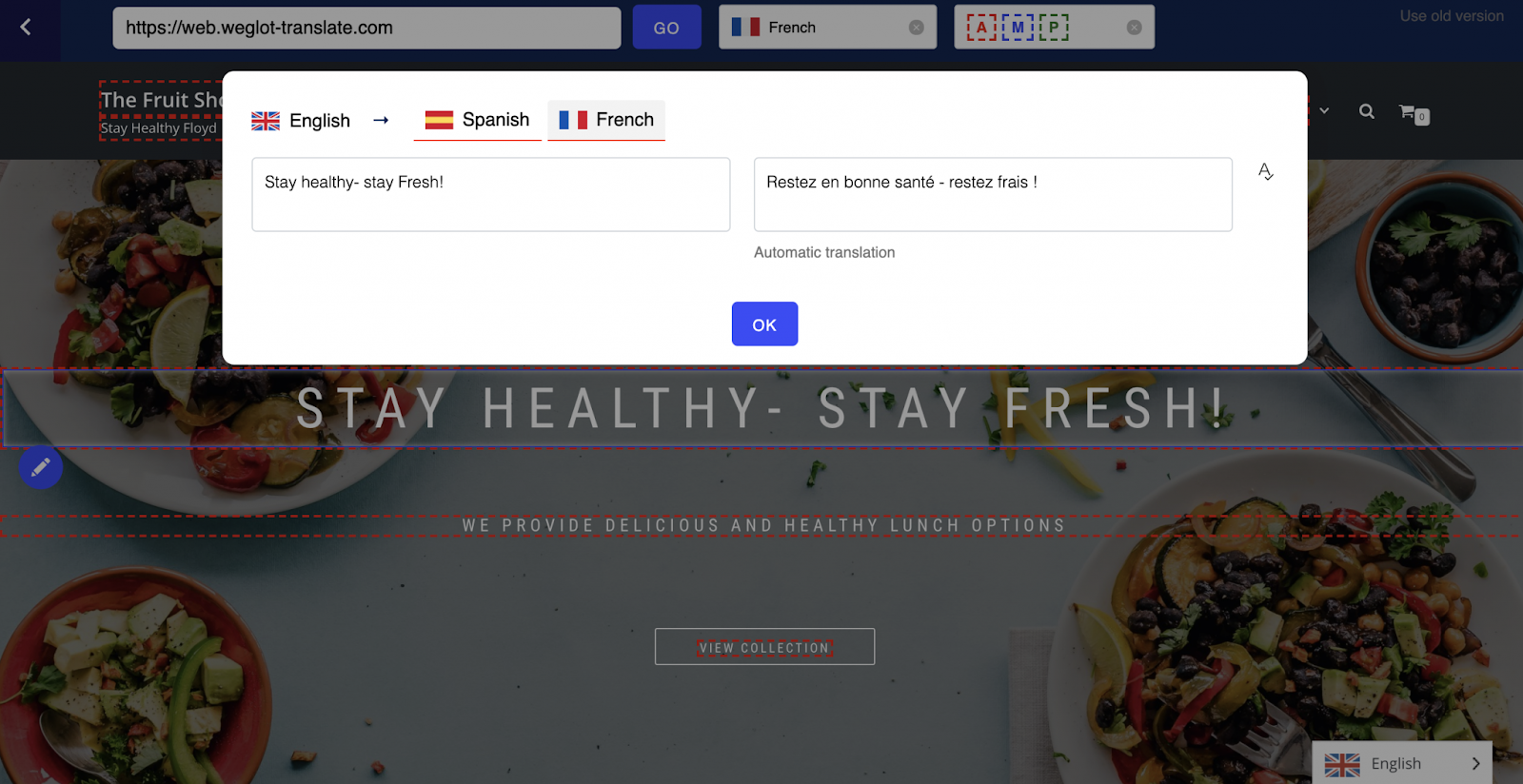How to Translating your Shopify Store?
Thanks to Shopify, selling online is easier than ever. That’s why there are 500,000 active stores running on the platform. If you’re one of them, you might be looking for ways to take your store to the next level. Considering the significant increase in cross-border eCommerce sales, translating your Shopify store is one of the most effective ways of increasing your sales in 2021.
And once you realize that translating your Shopify store is a very fast and easy process, you might regret not having done it earlier. Therefore in this article, I will explain to you why translating your Shopify store is crucial in 2021 and how you can do it easily with Weglot.
Benefits of adding languages to your Shopify store

If you believe that having a multilingual store is unnecessary because everyone speaks English nowadays, it might be time to face some facts. Because the reality is, 75% of internet users aren’t native English speakers and 9 out of 10 of them ignore a product if it’s not in their native language. Therefore, it’s not hard to see that not having a multilingual store is costing you a large number of potential customers.
Even if you only sell within the borders of a country, there are still many different languages that are widely spoken. Considering that 60.6% of people with high proficiency in English would still rather look up something online in their native language, your English-only Shopify store won’t even show up in the results of these searches.
Moreover, the hardship that economies endured in 2020 highlights the importance of an international online strategy. Reaching international markets by going multilingual is a very effective way of spreading risk rather than focusing only on the domestic market for online merchants who are doing business in these unprecedented times.
Therefore if you don’t want to keep losing potential customers and unleash the true potential of your Shopify store in 2021, going multilingual is the answer.
Growth of cross-border eCommerce market
Online shopping was on the rise even before the coronavirus pandemic began. But as physical stores were forced to close and more customers started to change their shopping habits, total online spending hit $82.5 billion in May, up 77% year-over-year. According to experts, this type of growth would’ve taken 4-6 years if the pandemic didn’t accelerate eCommerce growth.
In particular, cross-border eCommerce is estimated to reach SEMrush$1 trillion in 2020. Thanks to this growth, businesses with an eCommerce offering managed to survive the best during the lockdown. And many consumers say that they plan to continue shopping online even when brick-and-mortar stores reopen.
These changes indicate even more opportunities to grow in the global eCommerce industry in 2021. Consequently, there will be more competition with new online stores opening every day. Therefore, businesses that offer a simplified online shopping journey for international customers by providing language options will always be one step ahead.
Change in customer behavior in the current climate

Apart from the drastic shift to online shopping, there have been other significant changes in how customers shopped in 2020. According to McKinsey, customers are now more mindful when shopping online due to financial concerns. Data from their research shows that customers are spending more time on researching the brands and the products before purchasing.
Another important change occurred in customer loyalty. When customers couldn’t find their preferred product at their preferred retailer due to the supply chain disruptions caused by the pandemic, they started to shop from different brands. Therefore, online stores will need to work harder to keep their customers.
All these changes in customer behavior show that online stores must put more effort into communicating with their customers. The trust that will be gained from talking to customers in their native language will pay off even more in 2021 than ever before.
Choosing a Shopify translation app
There are a number of translation apps on the Shopify App Store but choosing the right one is as important as going multilingual in the first place. But, how will you know which one is the best for your store? There are a number of considerations you need to keep in mind before making that important decision.
Number of languages available
Start off by making sure that the translation app supports all the languages you want to translate your content into. Keep in mind that as your business grows, you might want to add more languages to your store than you initially intended to. Therefore, it’s best to go with a translation app that offers a variety of languages.
Type of translation available
Then, check if the translation app supports machine translations, human translations, or both. Weglot, a popular Shopify multilingual app offers them both as a mix that allows you to quickly have the best multilingual version of your website. However, going global doesn’t just mean translating the texts on your website.
SEO
If your translation app doesn’t have features like multilingual SEO and media translations, you’ll just have translated text, not a translated store. That’s because multilingual SEO is what allows your foreign customers to find your store when they search for keywords in their native language. And translating the entirety of your store including visuals, checkout and email notifications is essential for a truly localized experience.
However, handling all these manually would be very difficult and time-consuming. That’s why choosing an automated translation solution like Weglot that takes care of all the aspects of translating your store will make everything easier and allow you to focus on your business.
How to add multiple languages to your Shopify store with Weglot
With Weglot, you can have your fully translated Shopify store ready in minutes. There are no complicated requirements, all you need to is to follow these simple steps:
- Download the Weglot app from the Shopify app store
- Create an account with Weglot and sign in
- Choose the languages you’d like to add to your store

And voila! Weglot has already provided a first layer of automated translation for your store. Now you can easily manage your translations from your Weglot Dashboard or the in-context editor that allows you to make changes directly on a preview of your website.

You can also add team members to your translation project and work together. Or if you prefer a professional translator to verify your translations, you can order this directly from your Weglot Dashboard and have your translations ready in 24-48 hours.
Another great feature of Weglot is that it also translates your checkout and email notifications.
You’ll also find that popular Shopify apps such as smart search apps and image galleries are also translated with Weglot. This way you know you’re offering a seamless user experience to your potential foreign customers.
As you can see, having a translated Shopify store with Weglot is a fast and painless process. When everyone else is going global to take advantage of the increased opportunities of the cross-border eCommerce industry in 2021, there is no reason for you to stay behind.
**About the author: sam
Believe it or not, Merve used to be a lawyer. She is now the Digital Content Marketing Junior at Weglot, a translation solution that allows you to make your eCommerce website multilingual in minutes. She likes to spend her days writing articles, watching funny cat videos, and desperately trying to learn French.
New Posts

How To Set Up Google Analytics 4 For Your BigCommerce Store






